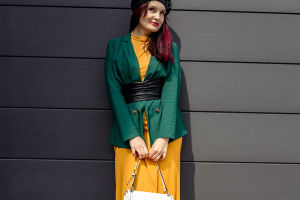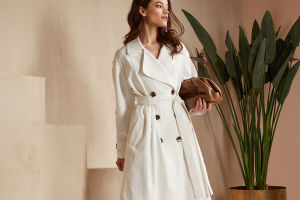Picture walking into a room before uttering a single word. Your attire is already speaking volumes. Studies confirm that within mere seconds, snap judgments form based heavily on what you wear. This isn't shallow; it's primal.
Clothing choices instantly signal aspects like perceived competence, trustworthiness, and even warmth.
Think of the stark difference between a crisp suit projecting authority and cozy weekend wear signaling relaxation. That initial visual handshake is powerful and often lasting.
Context is Key
Dressing well doesn't mean dressing formally all the time. The magic lies in alignment. Wearing beach shorts to a boardroom screams misalignment, just as a three-piece suit feels out of place at a backyard barbecue. Understanding the context – the event, the audience, the cultural norms – is paramount. It's about respecting the situation and communicating you belong.
A lawyer wears a sharp blazer for court; a creative director might choose bold, artistic pieces for a pitch. The right clothes signal you understand the game being played.
Professional Polish
When ambition and knowledge need showcasing, professional attire reigns supreme. Research consistently shows individuals in tailored suits, polished dresses, or sharp business casual are perceived as significantly more ambitious and knowledgeable than those in casual wear.
This isn't just about looking the part; it subtly commands respect and primes others to take you seriously during critical moments like job interviews, high-stakes presentations, or important negotiations. The details – a well-fitted shirt, clean shoes – compound the effect.
Casual Cool
Does this mean casual is bad? Absolutely not! Trendy or relaxed outfits excel at projecting approachability and friendliness. Think of a tech startup founder in stylish sneakers and a well-cut hoodie, or a teacher in comfortable yet colorful separates.
This style fosters connection, making others feel at ease. It signals creativity and a more relaxed, collaborative spirit. The key is intentionality – looking put-together within the casual framework, avoiding sloppiness that can undermine credibility.
Confidence Catalyst
Ever slipped on an outfit that just felt right? That instant boost isn't imaginary. Wearing clothes that resonate with your personal identity and suit the occasion acts as a powerful confidence catalyst. Studies reveal that individuals in outfits reflecting their authentic style feel significantly more comfortable and self-assured.
This inner ease radiates outward, enhancing posture, eye contact, and overall presence. When you feel good in your clothes, you project authenticity and credibility.
Uniform Focus
The power of specific attire extends to dedicated roles. A scientist performing better in a lab coat, a chef more precise in their whites, or an athlete feeling primed in their gear – these aren't coincidences. Wearing a uniform or task-specific clothing creates powerful mental associations.
It signals to the brain, "It's time to work," "Time to create," or "Time to perform," effectively narrowing focus and enhancing concentration on the task at hand. The clothes trigger the desired professional mindset.
Daily Rituals
We intuitively use clothing for mental shifts daily. Putting on workout gear signals readiness for physical exertion. Changing into comfortable loungewear tells the body it's time to unwind. Selecting a specific "power outfit" for an important meeting primes confidence.
These small clothing rituals create psychological boundaries between different roles and activities, helping us transition mentally and perform optimally in each distinct context. It's self-directed role preparation.
Dress Deliberately
Given this powerful science, approaching clothing choices with conscious intent becomes crucial. It's not about vanity, but about harnessing a tool for communication and performance.
Before getting dressed, pause. Consider the day's key interactions, the desired impression, and the specific context. Ask: Who will I meet? What outcome do I seek? How do I want to feel? This simple act of mindful selection transforms getting dressed from routine into strategy.
Silent Advantage
Your clothing is far more than just fabric; it's a silent language and a performance enhancer. From shaping crucial first impressions and signaling competence, to boosting your own confidence and sharpening your cognitive edge, the science is clear.
By dressing with mindful purpose – aligning your threads with the context, your goals, and your authentic self – you unlock a potent, often overlooked, advantage. So tomorrow, choose not just clothes, but your silent superpower. Dress not just to look good, but to be your best.


